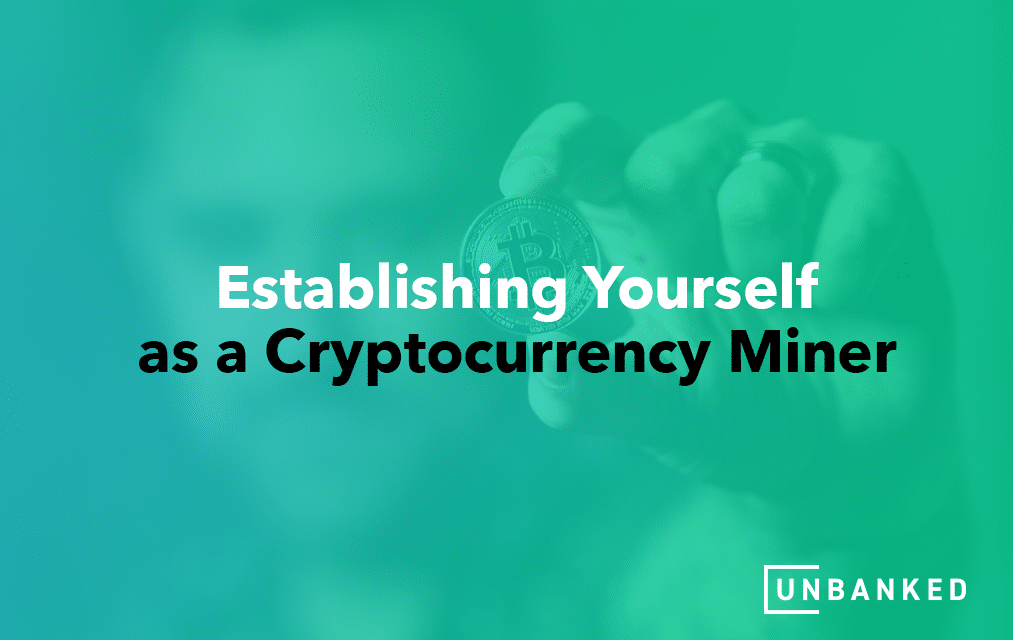Mining essentially refers to the discovery of new cryptocurrency coins – just like mining gold. The digital currency miners use computers to solve complex mathematical problems and are given a small number of newly generated tokens as a reward for their work. Mining can yield a lot of digital cash if done at the right time with the right vision.
Before establishing yourself as a miner, you must understand the different kinds of cryptocurrencies that can be mined and what methods can be used to mine them. Mining is like a gamble and there is always competition going on between miners to mine the same coins. Mining takes both time and money. Depending on the type of coin you decide to mine, you might have to invest in a purpose-built system. Then, there is also the day-to-day expenditure on electricity. But this is just an investment; if your mining rig works out, you’d be able to earn a lot of money. There are three basic requirements of a mining operation: the wallet, the mining software, and the mining hardware.
1. Wallet
Wallets are encrypted online bank accounts in which you can store your cryptocurrency. Wallets have a unique address that allows you to safely send and receive cryptocurrencies. There are basically two types of wallets: online and cold storage. Online wallets are digital, which makes them less secure and more susceptible to hacks and breaches. But they provide the ease of trading and exchanging cryptocurrencies. Although several online wallets take security very seriously, their vulnerability cannot be ignored. An online wallet might be the right decision for you if you are dealing with small amounts of digital currencies.
Cold storage wallets refer to actual physical devices where your currency can be stored. This means you can carry your crypto wallet wherever you go, and no one can just hack it and steal your digital currency. These wallets come with double passwords, which makes them even more secure. They look like a small flash drive and are easily portable. However, physical data storage also opens the possibility of corruption – and digital corruption means less wealth. Like actual wallets, you can also lose money by losing your wallet. This would mean losing all of your money at once. Depending on your needs and financial goals, you can decide which is the right wallet for you.
2. Mining Hardware
There are three popular mining hardware: GPU, ASIC, and FPGA. But what you choose will depend on the kind of cryptocurrency you want to mine.
a) GPU (Graphic Processing Unit): GPUs are slower at mining compared to ASIC and FPGA, but they are very useful for mining cryptocurrencies that do not have dedicated hardware (like Ethereum, ZCash, and BitcoinGold). Being adaptable, cost-effective, and user-friendly, GPU is still popular amongst miners.
b) FPGA (Field Programme Gate Array): FPGA is a blank digital circuit, i.e., you need to design the circuit yourself according to your requirements. Once you design the circuit, it will behave accordingly. This means that FPGA is not for beginners – it might take them a lot of time to learn. However, FPGA is significantly more efficient than GPU. It is also adaptable as you can change the algorithms. They offer a lot of cost-effective options too.
c) ASIC (Application Specific Integrated Circuit): ASIC offers both promising functionality and power efficiency. They are built on a single algorithm for a single purpose – mining cryptocurrencies. It is extremely powerful and runs at a high speed. However, they are very expensive, costing thousands of dollars. For example, in 2018, they were over $9000 because of the high demand. It’s not easy for a single miner to buy it but having ASIC might be profitable for a company (or a group) because of the kind of efficiency they provide.
3. Mining Software
Mining software is the thing you need to do the actual mining operation. Most of the mining software is free to download and use. But, like mining hardware, you need to take into consideration the kind of currency you are mining. The software must be compatible with that currency. There are several options available with only slight differences between them, so you must choose wisely according to your mining operation. Below are some examples of the mining software available:
a) CGMiner: Developed in 2011 for Bitcoin and Litecoin mining, it is considered the best software for Bitcoin mining as it offers a simple interface, direct controls, and cross-platform and cross-hardware compatibility. It is open source in nature and can be run on Mac, Windows, or Linux operating systems. CGMiner is better for advanced users due to the lack of graphical user interface. It is compatible with FPGA, ASIC, and GPU.
b) BFGMiner: Developed in 2012 for Bitcoin mining, it is one of the most popular mining softwares available. The most interesting feature is its ability to mine several cryptocurrencies at the same time. Like CGMiner, it also lacks a graphic interface, which makes it difficult for beginners to use. It is only compatible with FPGA and ASIC.
c) MultiMiner: It was developed in 2013 using the mining engine of BFGMiner. It offers a clean graphical user interface, making it the best for ease of use. With MultiMiner, you can get started with no technical skills as the software walks you through the installation process and shows users how to connect to the pool. Since MultiMiner was originally created for Windows, it requires additional software for Mac and Linux. It is compatible with FPGA, ASIC, and GPU.
d) Ethminer: It is a command-line program that works from a Windows command prompt or Linux console. Ethminer is an Ethash GPU mining worker, which means it can mine coins that rely on Ethash proof-of-work like Ethereum, Ethereum Classic, Musicoin, etc. It is compatible with GPU.
The field of mining is interesting and lucrative because there are so many digital currencies and new mining methods waiting to be uncovered. But it is important for potential miners to understand the process and weigh their risks before starting. To know more about careers in the cryptocurrency space, you can register with us and read our blog.





